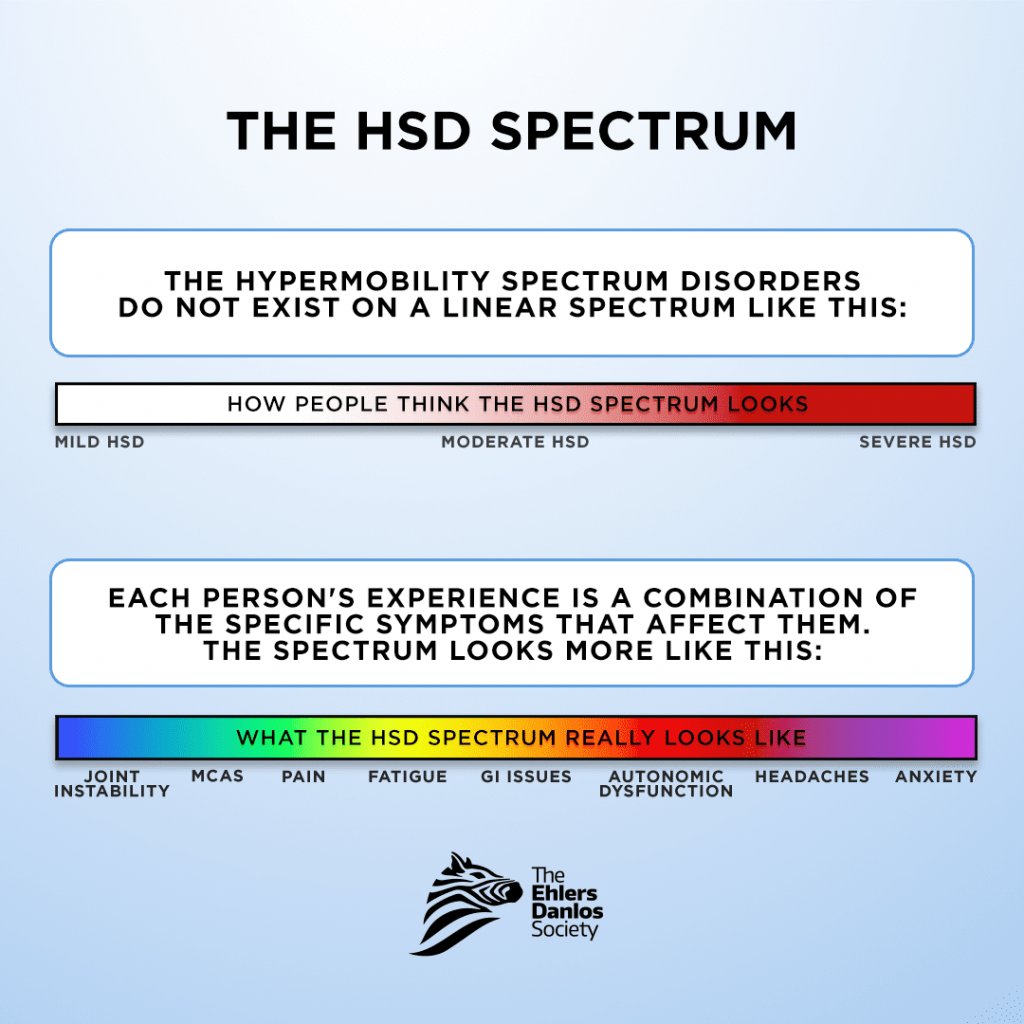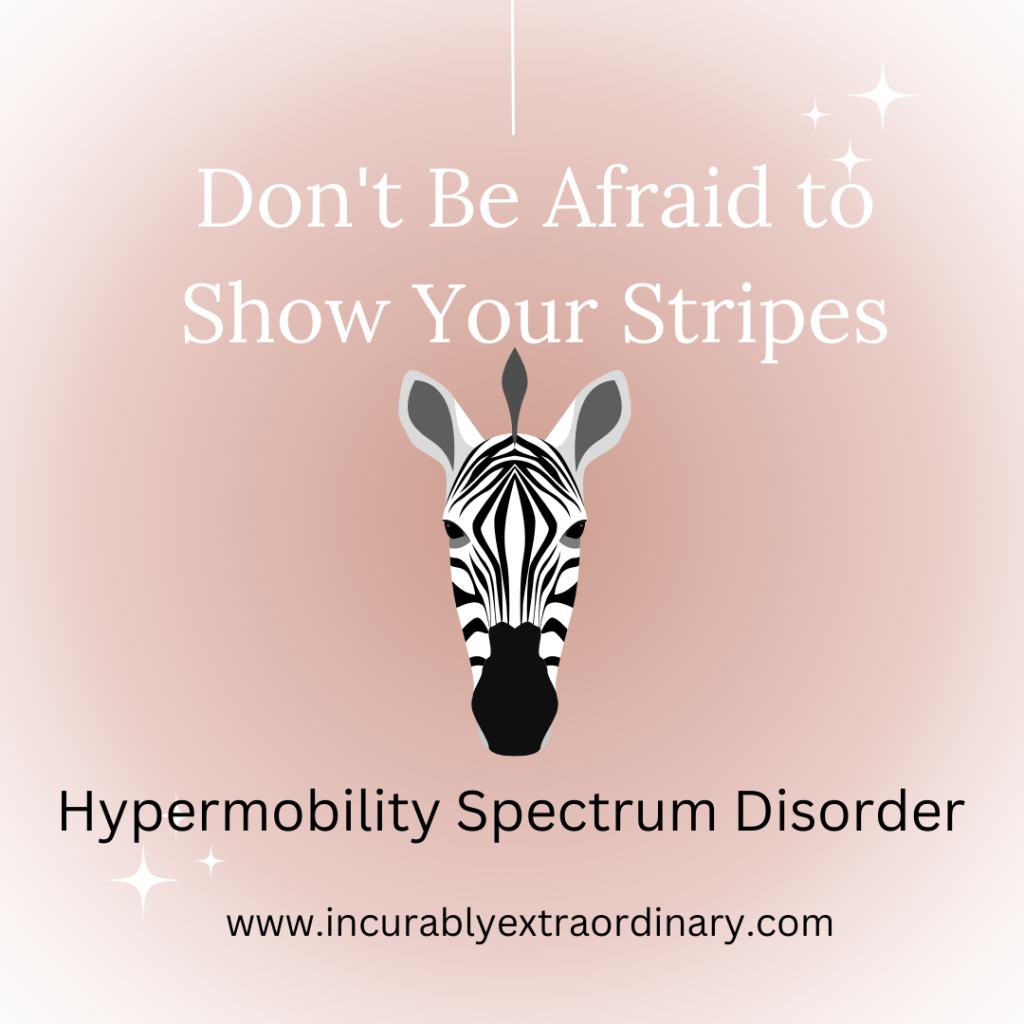Hypermobility Spectrum Disorder-HSD
This is my journey to my diagnosis of Hypermobility Spectrum Disorder (HSD). It all started for me when I broke my ankle in 2018. I was walking in the house cleaning the floors wearing my Burks when for no apparent reason, my ankle collapsed and I feel over the side of my Burk, breaking my ankle. My daughter drove me to the ER and the ankle was reset and casted. The orthopedic surgeon who saw took one look at me and said he thought that I had Hypermobile Joints. This was the beginning of my journey. I started to research this rare disease and found myself in some of the information.
What is HSD?
Hypermobility Spectrum Disorder is a connective tissue disease. Joints of the body are hypermobile, unstable, easily damaged and painful. Some people can have hypermobile joints with no other issues. Others like me with these unstable joints have pain and dysfunction. HSD also can cause gastrointestinal issues, headaches, fatigue and many other related issues.

Growing Up with HSD
I have been experiencing joint issues since before my thirteenth birthday. For me, it started with chronic knee pain. I have gone to the best pediatric hospital in Ontario. They could not find what was causing me these issues. They dismissed me on my seventeenth birthday without a diagnosis. The doctor did find that I had scoliosis, but it wasn’t severe enough for surgery and they did not at that time offer physiotherapy as a treatment.
As I did my research, I found out that those with HSD often are clumsy and have poor coordination. This is linked to unstable joints and a lack of proprioception. I have been falling and walking into things since I learned to walk. My knees, wrists, hands, and hips are hypermobile. I learned that my digestive issues, scoliosis, palmer wrinkling, wide scars on my body, joints that crack, dizziness, lack of coordination, early osteoarthritis and joint pain are all part of HSD.
HSD and HEDS
Hypermobility Spectrum Disorder and HEDS (Hypermobile Ehler Danlos Syndrome) is a diagnosis based on criterion. People on the spectrum who do not meet the criteria for HEDS are often given the diagnosis of HSD. Many specialists believe that they are one in the same. The treatment for both is identical.
You can be hypermobile but if you lack any affects from being hypermobile, then you do not have HSD.
Good Hope Clinic
In Canada, Good Hope is the one clinic for Ehler Danlos Syndrome. I had my family doctor refer me to the Good Hope Clinic. I was on the waitlist for eighteen months. The first step was an online interview (this was during Covid). I assume this is to determine if you meet the criteria for an in-person evaluation. The clinic appointment included a full physical and a review of my medical history and genetic testing to rule out other rare forms of EDS. The genetic testing came back negative for rarer forms of EDS. I am on the Hypermobility Spectrum. I then went to the psychological clinic, physio clinic, cardiology and pain management clinic at Good Hope. Good Hope writes plans of care that continue in your community.
The cardiologist diagnosed me with Postural Orthostatic Tachycardia Syndrome (P.O.T.S). My heart rate increase over 20 beats a minute when I stand up from sitting down, then I get dizzy and can lose my balance. The treatment is to make sure I get enough salt and liquids daily. Most days I am able to manage this.
In the physio clinic we developed a strengthen plan that works with my unstable joints.
In the psychology clinic I attended a workshop on Acceptance and Commitment Therapy (ACT). This type of therapy helps participants to accept their feelings and live in the moment.
I had a virtual appointment with the Pain Clinic. The purpose was to look at my medications and make changes to better manage my chronic pain.
The Good Hope Clinic reaffirmed for me that the issues I have with my joints are complex and not at all just in my head.
Ehler Danlos Society
The Ehler Danlos Society is a great resource. I have attended one of their in-person conferences and most recently an online conference dedicated to Hypermobility Spectrum Disorder. The site has information for physicians, medical personnel and those of us who are affected. The one thing that I remember from the in-person conference, is the statement posted on the big projector it said, “It is not in your head!”. This actually brought tears to my eyes. I have been seeking answers for a very long time. Some doctors suggested it was all in my head.
My advice to anyone struggling with getting a diagnosis is to not give up. It can be overwhelming and anxiety provoking but there is help out there. Don’t give up hope!
